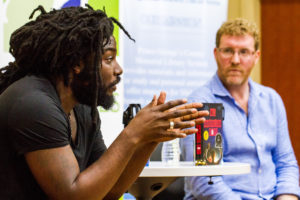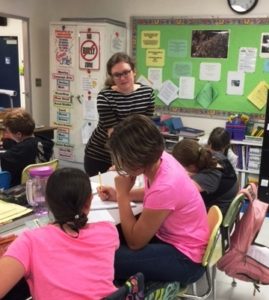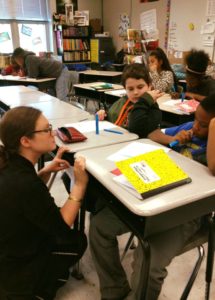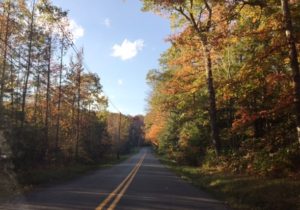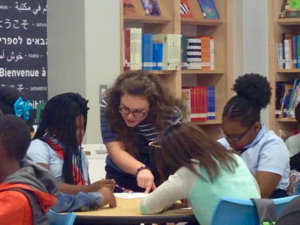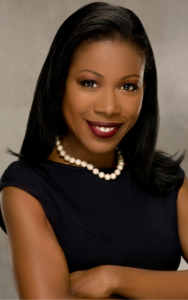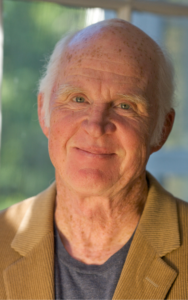by Susie Hinz
Our theme for One Maryland One Book 2017 is Home & Belonging. Maryland Humanities’ Development & Communications Assistant Susie Hinz reflects on how we can think about home and belonging by reading science fiction and science fiction fantasy.
How broadly can we think about home? Is it a house? A town? A country? In science fiction, sometimes home is an entire planet. Reading science fiction and science fiction fantasy can send us barreling across galaxies or careening through space-time, but it often stays incredibly grounded to here—to Earth.
The Hitchhiker’s Guide to the Galaxy series by Douglas Adams centers on the adventures of one human, Arthur Dent, as he travels across the Universe, the lone survivor of the planet Earth. At the beginning of the story, Dent escapes Earth just moments before it is destroyed by an alien race building a “galactic hyperspatial express route”—what we would call a super highway. Yet Dent and the readers who follow his journey return to Earth again and again throughout the series’ five installments. Adams takes us to places as far away and strange as “The Restaurant at the End of the Universe,” a restaurant that offers its patrons a view of the end of everything. We encounter aliens and cultures and planets of all sorts. But the series ends as it begins—here on Earth. Dent considers Earth home, but it is also a place he needs to escape. Neither the reader nor Dent can escape the ties to our natural home.
In Jeanette Winterson’s novel The Stone Gods, Earth is more than a beginning and an end. Winterson’s postmodern post-apocalyptic love story takes its readers through a few iterations of the lives of Billie, a human, and Spike, a “robo-sapien” in vastly different worlds and timelines. For Winterson, Earth and the concept of home are cyclical. Homes are lost and found, and not even necessarily on the same planet. Home is simply wherever human beings have landed in the endless possibilities of universes and multi-verses. To Winterson, humans are nothing without the Earth, our planetary home, and yet we continue to destroy it. Billie, facing another planetary destruction wonders, “Above me, the sky is drilled with stars, ancient light, immense distances, new worlds. If we found another planet, we could leave everything behind, start again, be safe. It would be different, wouldn’t it? Another chance?”[1] The Stone Gods journeys from one apocalypse to another, and somehow, amidst this chaos, humans still cannot appreciate their natural home.
We find these strong connections to Earth in so many novels in the science fiction genre, from A Wrinkle in Time by Madeleine L’Engle to Enders Game by Orson Scott Card. Many novels travel widely across space and time, but they are typically deeply rooted to our home on planet Earth. I am deeply moved by science fiction’s commitment to Earth as home and its commitment to the human race as a natural means of belonging. It minimizes our differences and it puts us all together on the same, tiny speck of cosmic dust.
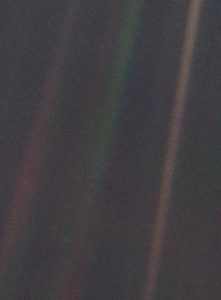
In 1990, Carl Sagan, convinced the scientists of the Voyager 1 space probe to turn the probe’s cameras back to Earth for one last photo before the cameras were disabled. Pictured at right is the image it captured from 3.7 billion miles away.[2] If you look closely, you can see a tiny blue speck suspended in the yellow ray of light pictured on the right side of the image. This image was the inspiration for Sagan’s 1994 Cosmos sequel, Pale Blue Dot: A Vision of the Human Future in Space. In Dr. Sagan’s words, “That’s here. That’s home. That’s us. On it, everyone you ever heard of, every human being who ever lived, lived out their lives… To my mind, there is perhaps no better demonstration of the folly of human conceits than this distant image of our tiny world. To me, it underscores our responsibility to deal more kindly and compassionately with one another and to preserve and cherish that pale blue dot, the only home we’ve ever known.”[3]
Science fiction takes us worlds and galaxies away. But as readers, it brings us closer to home and to one another. Science fiction promotes an affinity and a commitment to our planet. It examines the sense of belonging we feel in a community, town, or country, and magnifies it to reflect the entirety of our shared humanity. We can imagine other worlds—better or worse—but we cannot remove ourselves from our origin story, our pale blue dot, our cosmic home.
[1] Winterson, Jeanette. The Stone Gods. (Boston: Houghton Mifflin Harcourt, 2009), 200.
[2] Photojournal. PIA00450: Solar System Portrait – View of the Sun, Earth and Venus. February 14, 1990. NASA Jet Propulsion Laboratory, Planetary Image Archive, http://photojournal.jpl.nasa.gov/. Accessed January 23, 2017. http://photojournal.jpl.nasa.gov/jpegMod/PIA00452_modest.jpg.
[3] Sagan, Carl. The Pale Blue Dot: Short Recording. Audio. Library of Congress. Accessed January 20, 2017. http://www.loc.gov/item/cosmos000110/.
Do you have a favorite science fiction or fantasy book? Share your recommendation in the comments! Don’t forget to follow Maryland Center for the Book to stay up to date on the 2017 One Maryland One Book selection process.


